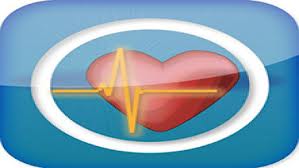“OUTSOURCING SUCCESS STORIES”
A CARDIAC CENTER RESUSCITATED
 Jack, a 38-year-old forklift driver had been admitted to the XY Cardiology Center a night ago complaining of excruciating chest pain and palpitations. He was an obese male who had been diagnosed with atherosclerosis couple of months back. Although diet, smoking cessation, and alcohol abstinence was definitely indicated in his case, it was apparent he had been negligent about his treatment course prescribed by the cardiologist. Also he had no-showed for all of the scheduled fortnightly follow-up visits, and no attempts had been made by the clinic to reach him, for the simple reason that his patient information sheet could not be located in the brick-and-mortar medical records room. Now, this morning as he was being wheeled into the operating theater for an emergent cardiac procedure, the anesthetist knew next to nothing about Jack present health condition and his allergies and was in a dilemma as to what type of anesthesia needs to be administered and the dosage of it, and Jack’s latest live-in girlfriend had nothing useful to divulge.
Jack, a 38-year-old forklift driver had been admitted to the XY Cardiology Center a night ago complaining of excruciating chest pain and palpitations. He was an obese male who had been diagnosed with atherosclerosis couple of months back. Although diet, smoking cessation, and alcohol abstinence was definitely indicated in his case, it was apparent he had been negligent about his treatment course prescribed by the cardiologist. Also he had no-showed for all of the scheduled fortnightly follow-up visits, and no attempts had been made by the clinic to reach him, for the simple reason that his patient information sheet could not be located in the brick-and-mortar medical records room. Now, this morning as he was being wheeled into the operating theater for an emergent cardiac procedure, the anesthetist knew next to nothing about Jack present health condition and his allergies and was in a dilemma as to what type of anesthesia needs to be administered and the dosage of it, and Jack’s latest live-in girlfriend had nothing useful to divulge.
XY Cardiology Center Profile
XY Cardiology Center is a much respected Cardiology Center, which has been serving the community with aplomb in downtown Philadelphia for close to 15 years now. Begun as a free clinic, it quickly outgrew its origins to serve both the privileged and the underprivileged sections of the society. Initially restricting itself to basic cardiac care on an outpatient basis, it began accommodating modern cardiac diagnostic tools like CT angiogram, echocardiography, and exercise stress tests. A 5-bedded postoperative care unit was established soon thereafter to facilitate interventional cardiac procedures like CABG etc.
The Pain Areas:
Unfortunately, the IT department of the Center was unable to keep up with its growth. In fact the Center boasted of just 3 computers of low configuration and an intermittent Internet connection. Patient records were still typed and filed away in thick cabinets in an alphabetical order. Although they employed 2 transcriptionists in shifts to take care of their 30 odd patient encounters for a day, they often fell behind in the typing of patient charts, and of course this did nothing in
preventing episodes such as the one described above. Many a time this had affected their revenue cycle in the form of delayed claims submission to insurance companies. But the most important victim of the above scenario was patient care, and the management of XY Cardiology Center was most pained about this. Realizing that a simple solution was not possible here, they approached iSource Inc to provide them a panacea for all of their record-keeping ailments.
How and Why iSource?
iSource’s strong presence on the World Wide Web made it easy for XY Cardiology Center to reach out to it for help. iSource’s utilization of operational centers in back office havens like India and the Philippines also made it very competitive in terms of cost and provide a 24 x 7 technical support to its clients.
iSource’s Pain Alleviation Strategy:
After a detailed telephonic discussion, an onsite consultant was dispatched by iSource. The consultant came up with a blueprint that was used to arrive at a solution. The most important findings were:
1. The doctors were dictating into an antediluvian in-house dial-in system and there was no interface for keying in patient information, which resulted in the transcriptionists manually scouting for this at the front desk.
2. The codec of this system got corrupted often and there were times when they waited for days for the systems analyst to get this up and running again.
3. The transcriptionist turnover was high, due to the unattractiveness of medical transcription as
a career in this suburb and strenuous nature of the job.
Besides the transcribers were part-timers who sometimes committed gross Cardiology medical errors such as:
a) “Drug eluting” keyed as “drug eluding”
b) “Cardiolite stress test” keyed as “cardiolyte stress test”
c) “Interatrial septum” keyed as “intraarterial septum”
d) “precordsium” keyed as “pericardium”
e) “15 cm from the incisor” keyed as “15 cm from the incision” etc.
iSource came up with a simple but elegant solution:
It had all the doctors use its dial-in dictation system, which they can do so even from the confines of their home, and clearly trained them as to how patient information can be keyed into the system itself. It then trained the front-office personnel in the usage of a simple online EMR, which is available free of cost. This ensured that patient schedules and patient information is kept both safe and readily available. Last, but not the least it employed a trained cardiology transcription team at one of its offshoring centers to churn out accurate reports within a span of 12 hours from their being dictated. In addition to all of the above they provided 24 x 7 customer support to the Center if and when an issue arose.
Client Feedback:
 Within a span of one month iSource’s stratagem brought the administrative efficiency of the XY Cardiology Center to near Six Sigma levels, with no incidents such as the one initially described occurring. They did away with one of the transcriptionists and used the other one mainly for printing out patient records and other lesser critical tasks, the doctors were very pleased with the accuracy and turnaround time of the reports, the overheads were reduced and the revenue cycle affected in a positive manner, but the most important result was that the Center garnered more respect in the eyes of its community, and this in turn generated more business for it. In the words of the Chief Operating Officer of the Center “choosing iSource was the next best thing we did besides starting the Center itself, we can never imagine switching to another transcription provider, and we doubt that anyone else can provide such holistic support.”
Within a span of one month iSource’s stratagem brought the administrative efficiency of the XY Cardiology Center to near Six Sigma levels, with no incidents such as the one initially described occurring. They did away with one of the transcriptionists and used the other one mainly for printing out patient records and other lesser critical tasks, the doctors were very pleased with the accuracy and turnaround time of the reports, the overheads were reduced and the revenue cycle affected in a positive manner, but the most important result was that the Center garnered more respect in the eyes of its community, and this in turn generated more business for it. In the words of the Chief Operating Officer of the Center “choosing iSource was the next best thing we did besides starting the Center itself, we can never imagine switching to another transcription provider, and we doubt that anyone else can provide such holistic support.”
| Download the case study here |
